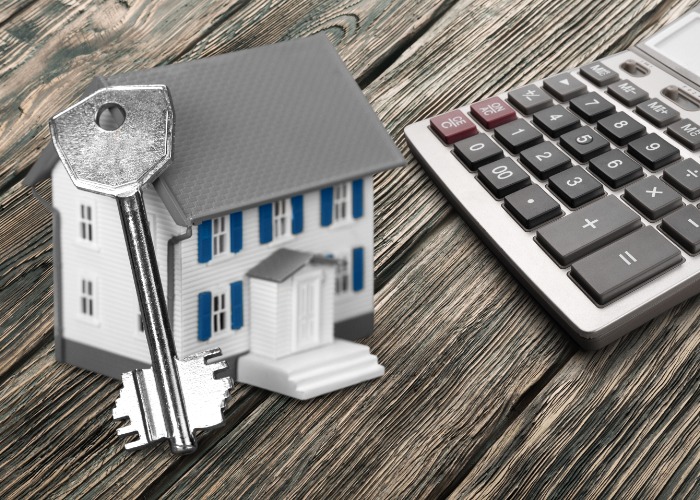How to beat Stamp Duty and the Scottish Land and Buildings Transaction Tax

We look at ways to cut or even avoid Stamp Duty, the Land and Buildings Transaction Tax in Scotland or the Land Transaction Tax in Wales.
Sections
Are you paying too much Stamp Duty?
Recent years have seen the taxman forced to hand back millions in overpaid Stamp Duty to thousands of homeowners.
Tax specialists at Cornerstone Tax said that, in the last three years alone, it has helped homeowners reclaim a whopping £30 million from the taxman.
It argued that there are certain reliefs, exemptions and misconceptions that many homeowners are unaware of, but which could mean they qualify for a significant saving on the tax outlay.
It’s a useful reminder of how complex the Stamp Duty rules can be with cases that fall somewhat out of the ordinary.
Nonetheless, it’s crucial to understand how the rules work for mainstream property deals, and therefore what you’re likely to have to pay.
What is Stamp Duty, LBTT and LTT?
Stamp Duty Land Tax (SDLT) is a levy paid on property and land transactions over a certain price in England and Northern Ireland.
In Scotland SDLT was replaced by the Land and Buildings Transaction Tax (LBTT) in April 2015. Meanwhile in Wales, Stamp Duty was replaced by the Land Transaction Tax (LTT).
Exactly how much SDLT, LBTT or LTT you will have to pay depends on the size of the property transaction.
Stamp Duty thresholds
Previously SDLT was charged as a single percentage of the entire purchase price across the UK.
This ‘slab’ structure meant buyers of properties just £1 over a threshold band would pay thousands of pounds more.
But following the Chancellor's Autumn Statement on 3 December 2014, the system has been reformed into a much more progressive structure.
In Scotland, Stamp Duty was replaced by LBTT in April 2015 which uses the same progressive model but has different thresholds, as does the Welsh LTT.
SDLT, LBTT and LTT are all charged at different rates depending on the portion of the purchase price that falls into a band.
The Stamp Duty thresholds are detailed in the table below:
|
Purchase price |
Residential Stamp Duty rate |
|
Up to £250,000 |
0% |
|
£250,001 ‒ £925,000 |
5% |
|
£925,000 ‒ £1.5 million |
10% |
|
£1.5 million plus |
12% |
Take note that from April 2024, the 0% rate will drop back to the first £125,000 of the purchase.
The following £125,000 will then come with a rate of 2%.
|
Purchase price |
Residential Stamp Duty rate |
|
Up to £145,000 |
0% |
|
£145,001 - £250,000 |
2% |
|
£250,001 - £325,000 |
5% |
|
£325,001 - £750,000 |
10% |
|
Over £750,000 |
12% |
And finally, here are the thresholds for LTT:
|
Purchase price |
Residential Stamp Duty rate |
|
Up to £180,000 |
0% |
|
£180,001 ‒ £250,000 |
3.5% |
|
£250,001 ‒ £400,000 |
5% |
|
£400,001 ‒ £750,000 |
7.5% |
|
£750,001 ‒ £1.5m |
10% |
|
£1.5m+ |
12% |
As you can see, one way to avoid paying Stamp Duty is to purchase a property within those 0% thresholds.
However, with the rates at which house prices have grown in recent years, that may be easier said than done.
Stamp Duty charges for additional properties
If you purchase an additional property, whether as a second home or as an investment, then you will have to pay a higher rate of Stamp Duty.
Essentially, these second home purchases come with a 3% Stamp Duty surcharge.
So taking the rates in England as an example, the nil rate band for properties of up to £250,000 will increase to 3% and the highest level of SDLT on properties of more than £1,500,000 will increase from 12% to 15%.
‘Chain-breaking’ purchases
You find the home of your dreams.
You find a buyer for your existing property. Everything is going swimmingly until the sale of your home falls through, bringing the whole chain to a halt.
However, if a property trader steps in to buy your existing property to enable you to complete the purchase of your new home, the trader will not have to pay Stamp Duty or LBTT.
That’s so long as the following conditions are met:
- The individual lived in the house as their main or only residence at some time during the two years before the trader bought it.
- The trader is buying the house to allow the purchase of the new home to proceed.
- The individual intends to occupy the new home as their only or main residence.
- The area of land bought by the trader is within certain limits – usually 0.5 hectares.
Multiple dwellings relief
One common reason for getting a Stamp Duty refund is multiple dwellings relief, according to Cornerstone Tax 2020, which is available if you are buying more than one dwelling in a transaction, or a series of linked transactions.
Let’s say that you are a property investor and bought four properties in England in a single transaction for a total of £1 million.
Ordinarily you would then pay Stamp Duty based on that total transaction figure, meaning a bill of £71,250
That would be 3% on the first £250,000 of the transaction (£7,500), 8% on the next £675,000 (worth £54,000) and then 13% on the final £75,000 (£9,750).
Multiple dwellings relief instead means that Stamp Duty is calculated based on the average value of each property in the transaction, with a minimum bill of 1%.
As a result, the tax would be calculated on an average purchase price of £250,000, meaning a total tax bill of £30,000, a substantial saving.
This isn’t just an issue for investors, either.
According to the English Housing Survey there are 24.2 million households with registered multiple dwellings on their properties (granny annexes for example) which could therefore qualify for this relief should they change hands.
Uninhabitable status
Purchasing a property that has been abandoned or is uninhabitable could also mean you qualify for a lower rate of Stamp Duty.
Essentially the higher rate of Stamp Duty is not payable if the property has fallen into a state of disrepair and is no longer safe to live in.
HMRC will assess the state of the property to determine if you qualify for a Stamp Duty exemption.
It’s important to bear in mind that a property being in need of modernisation is not the same as uninhabitable.
Instead, there needs to be some sort of serious issue which means it would not be safe for someone to live there, such as lacking basic features like a bathroom or kitchen, or if there is a health issue.
Property in your pension
The last of the most common reasons for being able to claim a refund according to Cornerstone centres on pensions.
It noted that business owners often move the commercial properties they own into Self Invested Personal Pensions (SIPPs) or small self-administered pension schemes (SSAS) as part of their pension planning.
Doing so is essentially classed as a change of ownership, and so may incur a Stamp Duty bill.
If the property was owned jointly ‒ such as by a husband and wife team ‒ or through an owner-managed company, and the pension scheme is then held in the name of the same partners, or those connected to them, then a Stamp Duty exemption may apply.
Clearly, this is a pretty niche issue, but it nonetheless impacts a decent number of people.
Cornerstone reckons that up to 75,000 people could be owed thousands in Stamp Duty refunds.
Comments
Be the first to comment
Do you want to comment on this article? You need to be signed in for this feature
